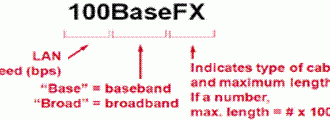Station access to a Token Ring is deterministic; a station can transmit only when it receives a special frame called a token. One station on a token ring network is designated as the active monitor. The active monitor will prepare a token. A token is usually a few bits with significance to each one of the network interface cards on the network. The active monitor will pass the token into the multistation access unit. The multistation access unit then will pass the token to the first downstream neighbor. Let’s say in this example that station A has something to transmit. Station A will seize the token and append its data to the token. Station A will then send its token back to the multistation access unit. The MAU will then grab the token and push it to the next downstream neighbor. This process is followed until the token reaches the destination for which it is intended.
If a station receiving the token has no information to send, it simply passes the token to the next station. If a station possessing the token has information to transmit, it claims the token by altering one bit of the frame, the T bit. The station then appends the information it wishes to transmit and sends the information frame to the next station on the Token Ring.
The information frame circulates the ring until it reaches the destination station, where the frame is copied by the station and tagged as having been copied. The information frame continues around the ring until it returns to the station that originated it, and is removed.
Because frames proceed serially around the ring, and because a station must claim the token before transmitting, collisions are not expected in a Token Ring network.
Broadcasting is supported in the form of a special mechanism known as explorer packets. These are used to locate a route to a destination through one or more source route bridges.
– Token Ring Summary –
- – Reliable transport, minimized collisions
- – Token passing/token seizing
- – 4- or 16-Mbps transport
- – Little performance impact with increased number of users
- – Popular at IBM-oriented sites such as banks and automated factories

